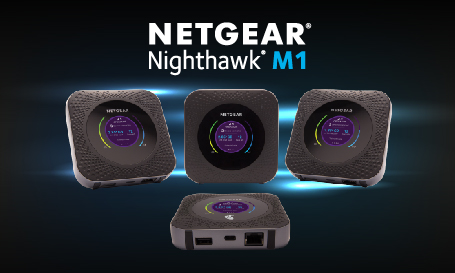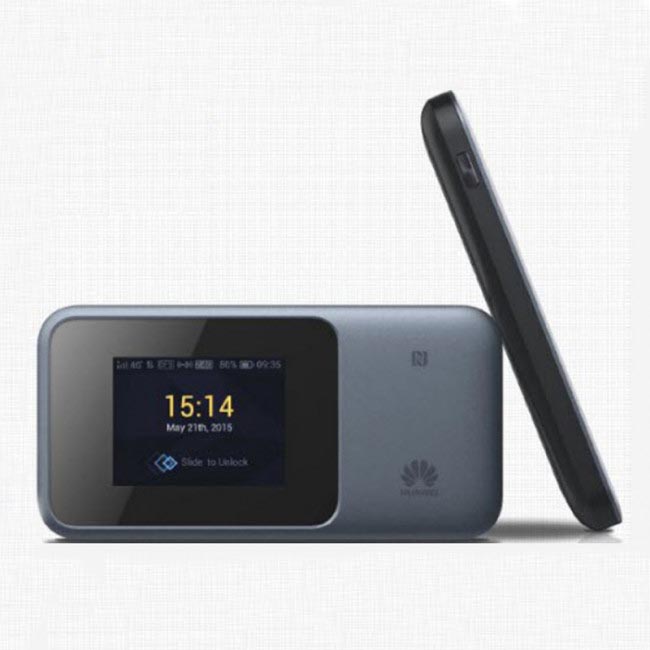Till the November 2017, Netgear Nighthawk M1 was always the fastest 4G LTE Pocket WiFi in market. With the support of download speed of 1Gigabit per second and 150Mbps for upload, Netgear Nighthawk M1 is very popular in the users who are looking for high speed terminals to work with LTE advanced Pro networks. With the release of a new 4G LTE Mobile Hotspot Huawei E5788, Netgear Nighthawk M1 has a challenging competitor.
Huawei E5 mobile hotspots are always the most popular wireless routers all over the world. Now the most advanced Huawei E5788 comes with Huawei advanced LTE technology. Today we will have a look at what the new LTE hotspot bring to us and what’s the difference between the two Gigabit LTE mobile routers.
Appearance
If you already known the Netgear Nighthawk M1, you may know the Netgear Nighthawk M1 is in square shape with LAN port. The Huawei E5788 doesn’t have the LAN port, it seems to be upgraded from the Huawei E5786 LTE cat6 mobile hotspot. Huawei E5788 has a 2.4 inch colorful touch screen to show the information about connection in square shape while Netgear Nighthawk M1 has also same size screen but in round shape. The power button of Netgear Nighthawk M1 is to switch the menu.
The SIM card slot of Huawei E5788 is at the side of the device while the Nighthawk M1 design the SIM card slot in the inner part under the battery, which is similar to the predecessor Netgear Aircard 810s. They both have two TS-9 connectors for external 4G LTE antenna in case of use in weak signal areas. Battery The Huawei E5788 has built-in battery of 3000mAh while the Netgear Nighthawk M1 has removable battery of 5040mAh. What’s more, the Nighthawk M1 can charge other electric devices on the large battery. Whether the Huawei E5788 has same function is not mentioned by the official sayings.
Technical Specifications
We summarize the main technical features of the two high-level LTE mobile routers as below:
| Model | Huawei E5788u-96a | Netgear Nighthawk M1 |
| Category | LTE Cat.16 | LTE Cat.16 |
| Chipset | Qualcomm MDM9250 | Qualcomm MDM9x50 |
| Supported 4G LTE frequency bands | Band 1/2/3/4/5/7/8/19/20/28/38/40/41/42 | -- Telstra Version: Band 1/3/7/8/28 -- AT&T Version: Band 1/2/3/4/5/7/12/29/30/66 |
| WiFi | 802.11a/b/g/n/ac, dual-band 2.4GHz & 5GHz | 802.11a/b/g/n/ac, dual-band 2.4GHz & 5GHz |
| Max support users | 32 users | 20 users |
| MIMO | 4 X 4 MIMO | 4 X 4 MIMO |
| Connector for external antenna | Two, TS-9 jacks | Two, TS-9 jacks |
| App management | Huawei Hilink APP | Netgear Aircard APP |
| Dimensions | 129 x 65 x 13.5mm | 105.5 x 105.5 x 20.35 mm |
From the technical specifications, we can see the two Gigabit LTE routers have very similar functions. The supported LTE frequency bands are different for various LTE networks in different areas. Here now, the Netgear Nighthawk M1 is available in the market and has gained very good reputation. The Huawei E5788u-96a(first released model) is not yet available. But we suppose it would be available son around the beginning of 2018. And who will be the winner, the market will tell.


沒有留言:
張貼留言